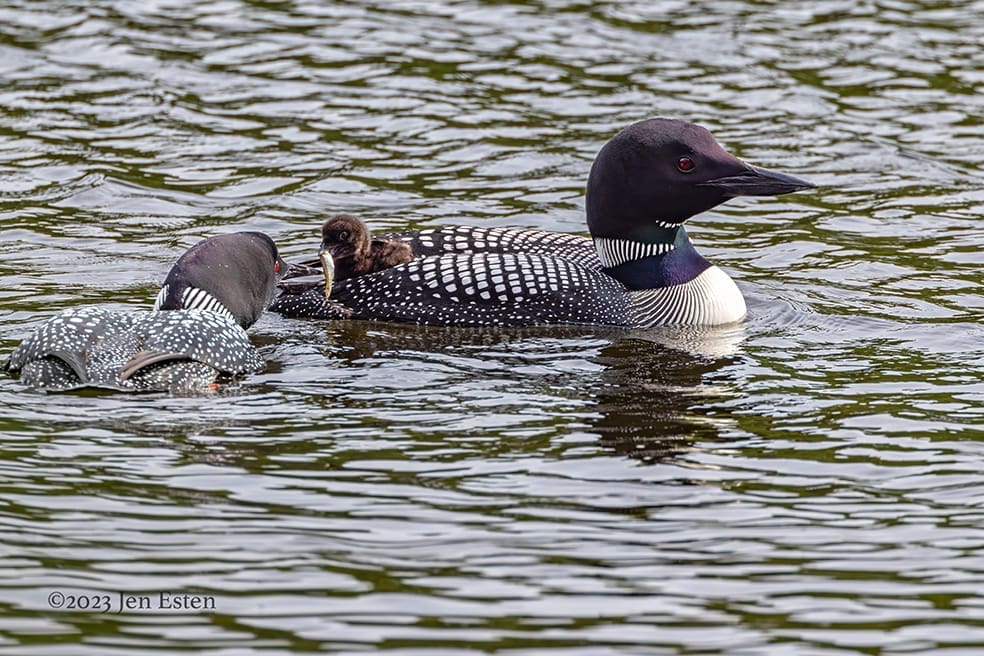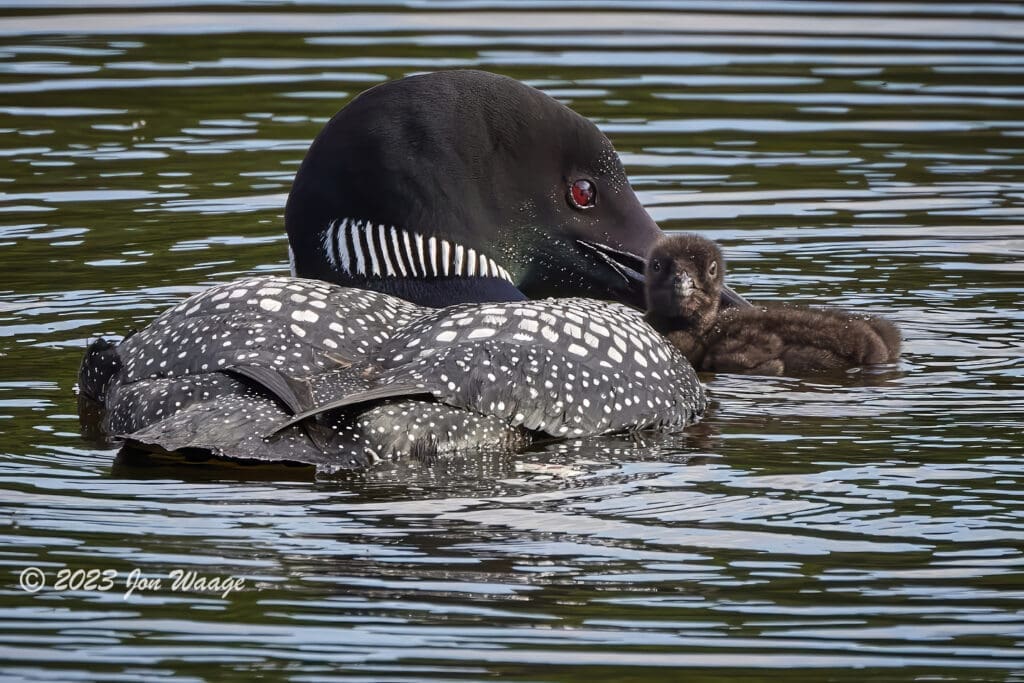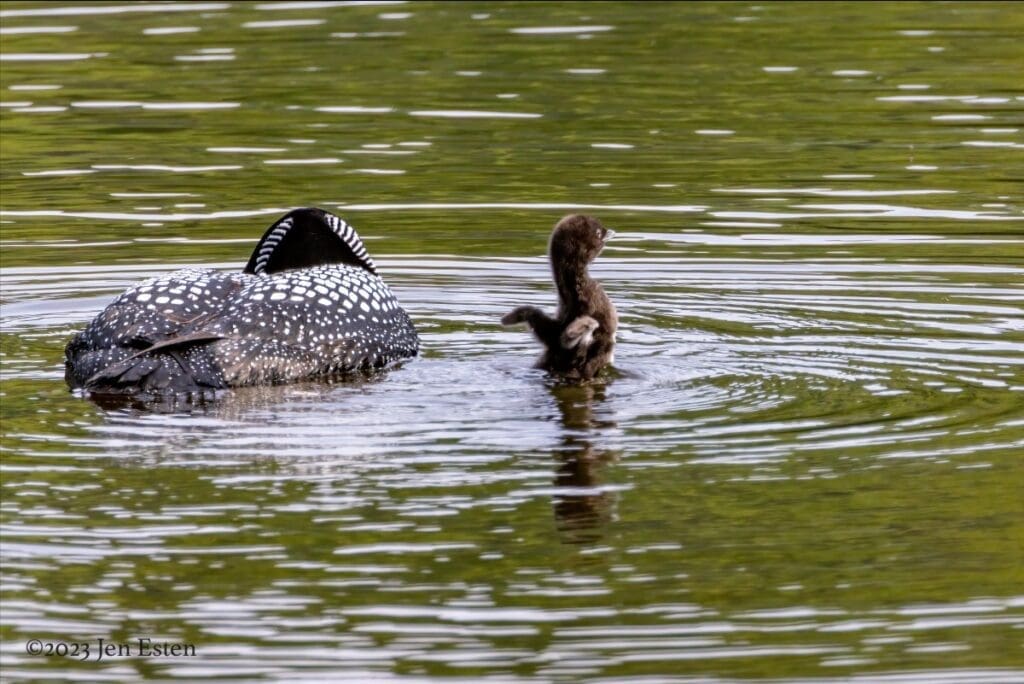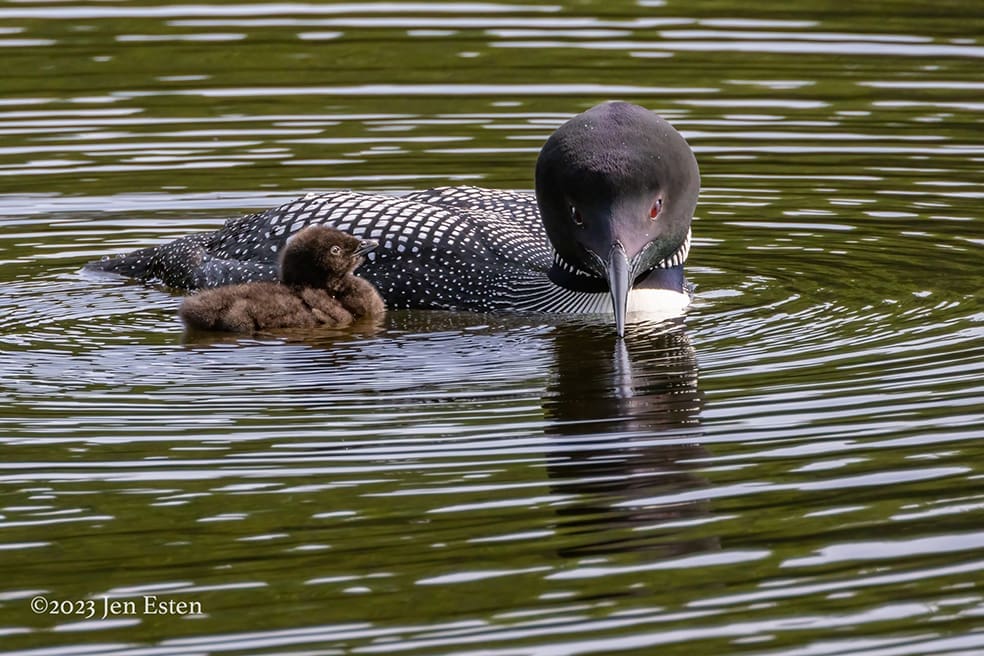Another Year with One Chick
2023, No. 4 — June 18
Sad News
With a second egg yet to hatch, the Loons had been staying in the Cove while they took turns on the second egg and tended to Paisley. The second egg hatched Friday morning and we kept an eye on things all day. By late afternoon the new chick, Petunia, was visible on the nest but not moving and the parents and Paisley were elsewhere in the Cove. Once they left the cove, Jon checked the nest by kayak and saw that the chick had died.

The LPC Sunapee Region Summer Field Biologist, Dylan Ricker, came that evening to recover the chick and eggs shells. We are hopeful that a necropsy will tell us what went wrong. Jon saw no obvious signs of injury when he checked the chick earlier.
Paisley Thrives
While losing the second chick is sad, it means Paisley will now get full attention of both parents. Loons typically produce two eggs but when both eggs hatch nearly half of Loon pairs lose one chick. However the chances for a single chick surviving are very good. Generally, only under the best of conditions and minimal sibling rivalry are two very healthy chicks likely to fledge.

For now, Paisley is being offered lots of food by both parents.

When Paisley needs a rest, a comfortable place is always provided. As you can see from the photo below, even then s/he will be offered food regularly.

Paisley’s parents are among the most successful and productive Loons in New Hampshire. Out of 29 hatched chicks, 21 have fledged (Paisley would make 22).
Having watched them for many summers we are always impressed by the attention their chicks get. They are amazing parents!

Paisley is quickly acquiring Loon behaviors including bridling, taking short dives and looking underwater.

This season our Loon parents have been very vocal and watchful. They have a lot to do finding food for Paisley and keeping an eye out for predators and other Loons. Both activities mean that the chick may be left alone now and then.

The way we can best ensure another successful summer for our Loons is to keep a sharp eye out for little Paisley when boating. It is a small dark 3-4″ fluff-ball and very hard to see amongst the waves. Give the family plenty of room to fish and tend to their chick. Watch for signs they are disturbed by your presence. Try to keep at least a 150 foot distance and minimal wake. If you are just drifting and they come nearer to you, enjoy!
To be continued… Jon and Jen
Text and Photographs by Jen Esten and Jon Waage

